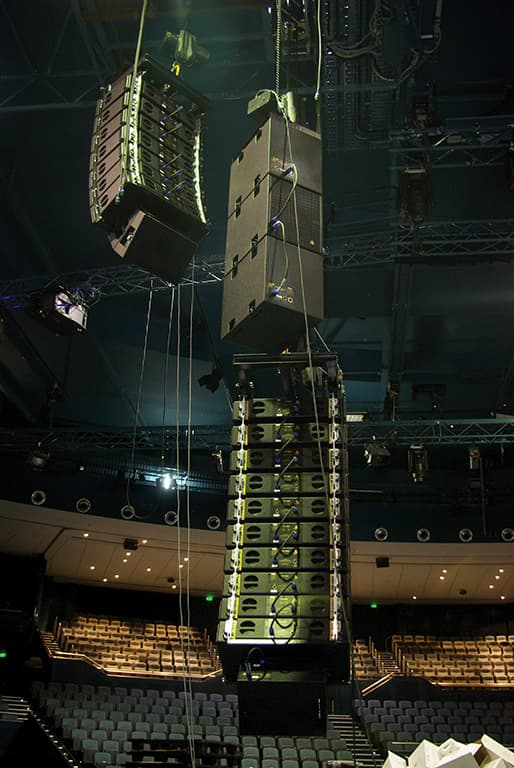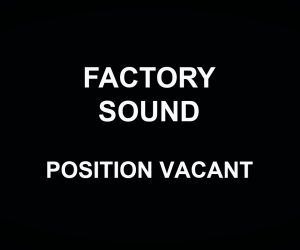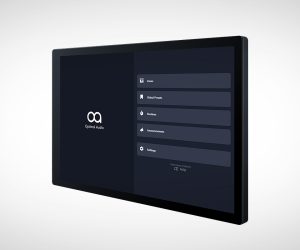
A Sound System of Biblical Proportion
Hillsong fast-tracks the installation of its new Adamson PA.
Text:/ Al Craig
Here’s a little riddle for you: Where in Sydney will you find a 3500-seat venue that hosts concerts to packed houses several times each week? Answer: Hillsong Church in Baulkham Hills. It holds two youth services every Sunday morning, one on Sunday night, and sometimes other services during the week. The venue’s layout is somewhat reminiscent of the Sydney Entertainment Centre, in that there is fixed seating in a horseshoe shape, and a floor area with rows of portable seating. The tiered stage is considerably lower than your standard concert stage, as intimacy is a priority and security is not an issue. You’d be living in a bubble if you weren’t aware of the style and the power of the music that takes place at each and every service. And of course Pastor Brian Houston’s Countryman E6 mic is the most important mic in the auditorium.
Recently, I was invited along to hear the newly-installed Adamson speaker system. I arrived on a Wednesday, at the tail-end of what you might call the commissioning phase, only to learn that an unscheduled service had been sprung on the crew, and was to be held that evening. Therefore, I only had an hour to talk with the principals involved before soundcheck was due to commence.
Why did Hillsong feel the need to upgrade its system? From what I could gather, the original system fell short on providing uniform coverage to every seat in the house. I also understand that some of the previous speakers (and amps) will be re-deployed at other Hillsong venues and the balance sold off.
HARD CHOICES
Why did Hillsong decide on Adamson? Systems from several manufacturers were invited to come to the venue and demo their wares. All of the staff and volunteer audio crew were on hand and asked to fill out a score card. The tech management folks then sat down and considered cost, rigging issues, sightlines, and factory support. At the end of the day, the Adamson system won the shootout. The most salient point from the subjective listening tests was the coverage. Factory support also rated very highly.
When I was there, the ‘factory support’ was Ewan McDonald who had flown in from Ontario on Monday night. Ewan designed the system using Adamson proprietary software known as Shooter and was onsite to ensure that the system was hung correctly and then to tune it, using WinMLS and Smaart.
The rig is essentially a four-way system and will soon be dead-hung from the rigging superstructure, which by the way, runs on tracks that allow the entire rig of screens, lights and speakers to be moved 12 metres downstage, for those occasions when the venue is made smaller and more intimate (similar to the Entertainment Centre’s ‘Lyric’ mode).
The main array is flown as a stereo pair with each side made up of 10 x Adamson Y10s with 2 x Spektrix boxes slung underneath for downfill. The Y10 contains two Adamson NDL (10-inch Kevlar/neodymium) drivers, one Adamson YX9 (nine-inch Kevlar mid-frequency) driver and 1 x JBL 2451 high-frequency driver. The mid and high drivers are housed in Adamson’s patented Co-Linear Drive Module which has a co-axial entrance and a co-linear exit. This consists of a high frequency sound chamber, mounted within a mid frequency sound chamber, designed to eliminate lobes in the middle frequencies, comb filtering between the mids and highs, and time-smear across the entire array. The Spektrix boxes are made up of 1 x 8.5-inch mid-low frequency driver, another 8.5-inch unit that handles the mid-high frequencies, and 1 x B&C DE900 1.4-inch HF driver mounted in a wave-shaping sound chamber.
Flown directly behind each of these arrays are 3 x Metrix subs in a cardioid arrangement that creates a low-frequency extension for the main arrays. The Metrix subs each contain two manifold-loaded 15-inch Adamson Kevlar/neodymium drivers. However, the main low frequency element of the system (and perhaps the most difficult rigging challenge), consists of six Adamson T21 subwoofers, which are flown in a cardioid arrangement directly above the stage. The T21 houses 2 x 21-inch Kevlar/neodymium drivers, utilising six-inch dual-coil symmetrical drives.

COMPLETING THE COVERAGE
During the initial design it became apparent that a side hang would be required to hit the seats at the top of the horseshoe. The side array is hung next to the main fills and comprises 7 x Adamson Y10 cabinets, again with 2 x Spektrix cabinets underslung. In addition to all that horsepower, there are 2 x Metrix subs sitting left and right under the stage, partly to service the front rows of the portable seating area, but as a by-product, they give the musicians on stage, who are all on in-ears, some extra thump (possibly the biggest butt-shaker you’ll ever hear).
According to CMI Music and Audio boss (the Australian agent for Adamson), Peter Trojkovic, the system just described “delivers a very smooth and even response to all but the top two rows at the back of the horseshoe, but due to Hillsong’s brief that every seat in the house must be covered evenly and equally, the design team at Adamson added a delay system.”
There are four delay hangs, spaced evenly across the rear of the auditorium. The centre two clusters are each made up of 5 x Metrix two-way speakers and the outer two are each made up of 4 x Metrix two-way speakers. The Metrix box encompasses a single ND8-ML (8.5-inch Kevlar/neodymium) mid-low frequency driver and B&C’s new DE800 1.4-inch HF compression driver with an Adamson high-frequency wave-shaping chamber. And finally, the outer two delay hangs each have one Metrix W cabinet (same components, slightly different shape and a 15° vertical dispersion).

THE CO-LINEAR DRIVE MODULE EXPLAINED
Brock Adamson’s patented Co-Linear Drive Module, is a co-entrant mid/high device, comprised of a high-frequency sound chamber inside a mid-frequency sound chamber. The nine-inch Adamson midrange compression driver fires into a concentric slotted phase plug. The conversion of the concentric rings to vertical slots in the midrange results in a flat wavefront.
The four-inch JBL high-frequency compression driver mounts coaxially to the back plate of the mid and fires energy through the pole piece of the mid and into a separate high-frequency chamber. The high chamber offers a series of cells that adjust both the path length and the vector of the energy within the wavefront at the exit. This reduces the curvature of the wavefront and ensures that all acoustic particle movement within the wavefront, is normal to the wavefront. This means that in the resulting hyper-directional horn-loaded mid/high system, the wavefront structure of the individual elements conforms closely to the shape of the overall array wavefront. There is very little of the scattered energy that causes vertical interference in other driver designs.
The drive module has three slots at the exit. The centre slot is energized with high-frequency pressure and is then flanked by two slots energized with mid-frequency pressure. With such close spacing and patented processing techniques, the chamber virtually eliminates time smear and mid lobing.
PULLING IT ALL TOGETHER – FAST
Can I stop right here for a moment and tell you that all of these speakers (and associated rigging) arrived at Hillsong on Tuesday morning and was pumping out tracks from a CD player by midnight. Mind you, all the amps, cabling and super-rigging had been prepared and/or installed earlier by Brad Law from Cuepoint (and the staff at Hillsong, led by production manager Steve Le Roux), but, there was a service on the previous Sunday evening, so nothing of the retiring system could be removed until Monday morning.
Moving upstream in the signal chain, all new amplifiers were also installed as a part of this system upgrade. A total of 18 x Lab Gruppen PLM 10000Q amps were utilised to drive the Y10, Spektrix and Metrix boxes. For the most part, the amps are positioned in the grid, which reduces the speaker cable runs considerably. The PLM 10000Q is configured as a four-input, four-output device, capable of delivering 2300W into a 4Ω load. Driving the subs are four of the new PLM 20000Q which are configured with two inputs and two outputs, with each output capable of 4400W into 4Ω. All amps have Lake processing modules, each offering precise settings for gain, delay, crossover slope, equalization and limiting. Signal distribution and processing control is provided by Dante, a self-configuring digital audio networking solution from Audinate. All of the signal processing, distribution and amplification equipment was provided by Hills SVL and Cuepoint.
HE WHO HAS EARS… LISTEN UP
Foldback is mixed on a Yamaha PM1D. While there are a few wedges hiding beneath grilles under the stage, for the most part, Sennheiser G2 wireless and Shure PSM wired in-ear monitors are the order of the day. All up there are 20 radio mics and 16 in-ear systems. The drum kit is surrounded by a Perspex cage and guitar amps are kept in utility rooms backstage. Keyboards are all on DIs. All of which results in a very low ambient level which makes life so much easier for the engineers and results in a better sound for the congregation.
Front-of-house is mixed on a Digidesign Profile. What caught my eye was the lack of any outboard gear or patch bays. On this day, FOH was being driven by Andrew Stark. Between him and Mush (the monitor engineer), they took an extra long time to go through each of the instruments in turn, as this was the first time they had a chance to ‘play’ with the new system. Once each instrument had been checked, the band was cut loose and played several songs. For the most part, there was a core rhythm section, and all manner of front line took to the stage in the two hours I was there. When I got the chance, I asked Andrew if, on first impression, he had any regrets about the new speakers. His response: “None”
So how does it sound? Well, for a system that was hung, tested and tuned in 30 hours (and under the caveat that further fine tuning will no doubt take place over the course of several weeks) I was impressed. The coverage was indeed smooth and even. Front-to-back, side-to-side it all sounded pretty much the same. At around 85dB SPL, the system felt like it was idling, but it had plenty of punch and presence. In order to reduce the slap-back coming from the rear of the venue, they have hung large panels of absorptive material. And Pastor Brian’s mic delivered. If you want to hear it for yourself, there is nothing stopping you from attending a service.
MORE INFORMATION
Adamson: www.adamsonsystems.com
CMI: (02) 9335 2244 or www.cmi.com.au
Cuepoint: (02) 8006 1486 or www.cuepoint.com.au















RESPONSES